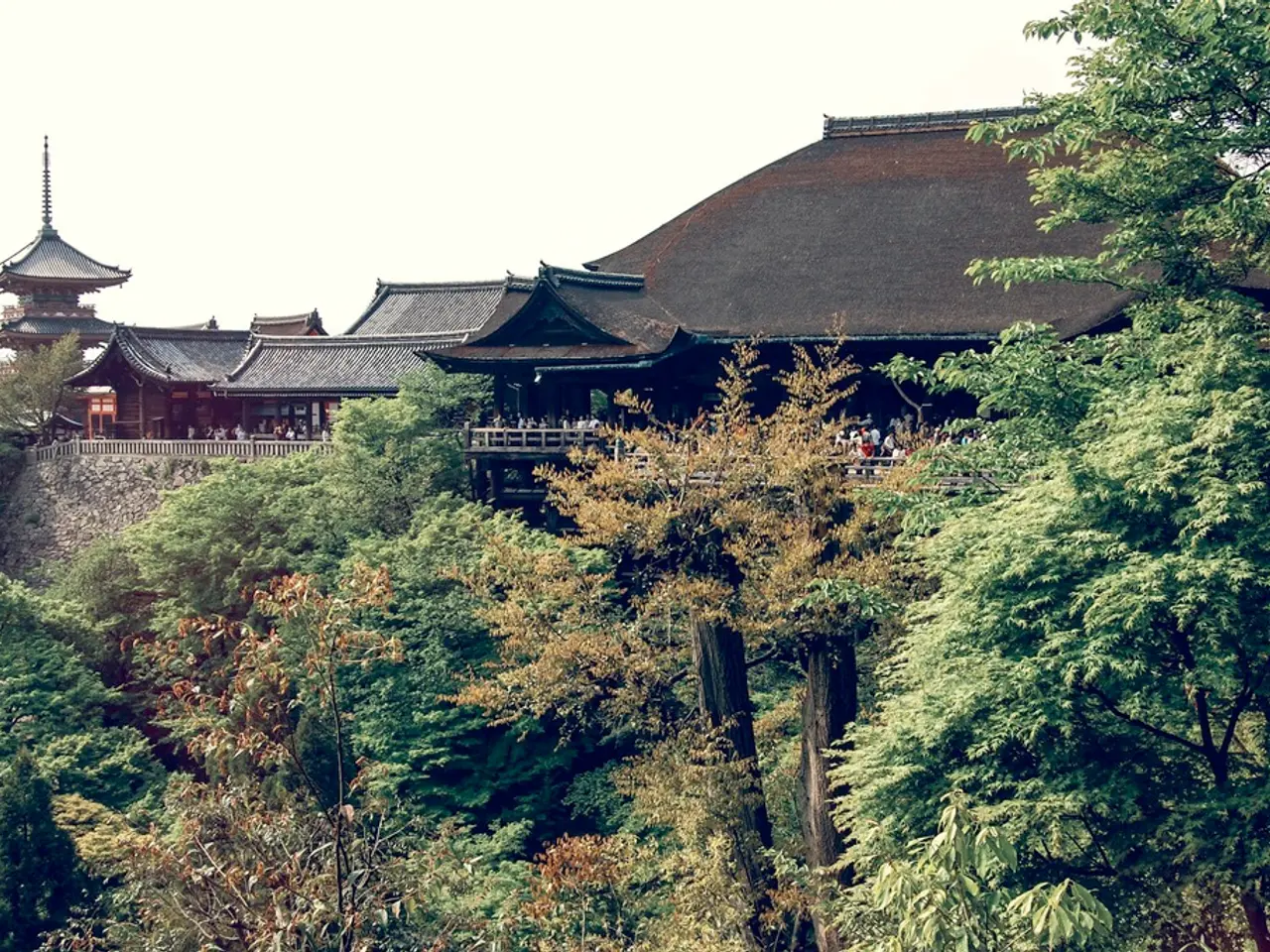The Significance of Machu Picchu: What Makes Machu Picchu So Significant?
In the heart of the Andes Mountains of Peru lies Machu Picchu, an ancient city built by the Incan civilization in the 15th century. This architectural marvel showcases the Inca's engineering brilliance, featuring dry-stone structures, intricate agricultural terraces, and ceremonial spaces.
Machu Picchu served as a multifaceted centre for the Incan civilization, playing roles as a royal estate, spiritual centre, astronomical observatory, and strategic administrative and control post.
The city is believed to have been built as a royal estate for the Inca emperor Pachacuti, serving as a luxurious getaway and a centre for elite gatherings. Its hidden location in the cloud forest made it an ideal sanctuary for religious ceremonies and spiritual practices, with huacas dedicated to the Sun and Moon. Some scholars suggest it was also used for astronomical observations due to its strategic positioning.
Machu Picchu was a key political and administrative centre, controlling the movement of valuable goods like coca leaves and gold from the Amazonian region. It provided invaluable insights into the social, agricultural, and religious practices of the Incas, showcasing their advanced engineering and architectural skills.
The city's design, aligned with celestial events, likely facilitated religious ceremonies and agricultural rituals. The Inti Watana, a ritual stone associated with solar observations, is a key feature of Machu Picchu, demonstrating the Inca's understanding of celestial movements. The Temple of the Sun, dedicated to the Incan sun god, Inti, features perfectly carved stones that create a semicircular wall.
The Incan civilization placed great emphasis on celestial observations, considering them vital for agricultural and religious practices. Festivals honouring deities and natural cycles were central to Incan life, and Machu Picchu's layout and structures served as venues for these significant cultural events.
Today, Machu Picchu is a UNESCO World Heritage site, attracting millions of visitors each year. Preservation efforts involve strict guidelines regulating visitor behaviour, limiting physical contact with structures and artefacts, ongoing monitoring, and restoration projects to ensure the site's integrity. Modern technologies in archaeology, such as LiDAR, ground-penetrating radar, and 3D modelling, are significantly enhancing research at Machu Picchu.
Ongoing research at Machu Picchu not only reveals details about the city itself but also contributes to a broader understanding of the Incan civilization. Comparative studies of other Incan sites, combined with interdisciplinary approaches, enable scholars to piece together a more comprehensive narrative of Incan culture, society, and technological achievements.
The purpose of Machu Picchu remains a subject of scholarly debate, with theories ranging from a royal estate to a spiritual retreat. However, its historical significance extends beyond its role in the Incan civilization; it is now a symbol of Peru's rich cultural identity.
Balancing conservation and accessibility is a delicate challenge for authorities managing Machu Picchu, requiring the implementation of visitor quotas, sustainable infrastructure, and technology to enhance the visitor experience without compromising the site's integrity. The continuous exploration of Machu Picchu plays a pivotal role in expanding our knowledge of this ancient civilization.
Preservation efforts extend beyond the physical site to include educational initiatives, raising awareness about the importance of responsible tourism and the need to safeguard Machu Picchu as a UNESCO World Heritage Site for future generations. The city is perched at an altitude of approximately 2,430 meters (7,970 feet), offering breathtaking panoramic views from the Room of the Three Windows, adjacent to the Temple of the Sun.
Ongoing excavations at Machu Picchu continue to yield valuable insights into the daily lives and activities of its inhabitants. Tourism at Machu Picchu has soared, drawing visitors from around the globe, and the experience includes a journey through the breathtaking scenery of the Andes, culminating in the awe-inspiring sight of the ancient city.
The Incan Empire left an indelible mark on the region, with Machu Picchu being just one of its many architectural marvels. The Inca's mastery of sustainable farming techniques, as shown in their terraced farming systems, showcases their commitment to preserving their environment. Their emphasis on sustainability and efficient water management played a crucial role in supporting the empire's population.
The fusion of astronomy, architecture, and spirituality at Machu Picchu remains a captivating aspect of the site's allure. The Inca's astronomical knowledge played a crucial role in determining planting seasons and organizing religious ceremonies. The alignment of structures with celestial events, such as solstices and equinoxes, reflects the Inca's deep connection to the cosmos.
In conclusion, Machu Picchu stands as a testament to the Incan civilization's advanced engineering, architectural, and astronomical skills. Its preservation and continued exploration provide valuable insights into the Incan way of life, contributing to a deeper understanding of this fascinating culture.
The city's design, aligned with celestial events, not only served religious ceremonies and agricultural rituals but also catered to the Inca's curiosity about the cosmos, reflecting their belief that astronomy was vital for both agriculture and spiritual practices.
Modern tourists, drawn to Machu Picchu, are intrigued not only by its ancient architectural splendour but also by the lifestyle, spiritual practices, and advanced knowledge systems of the Inca civilization, including their unique approach to astronomy and agriculture.





